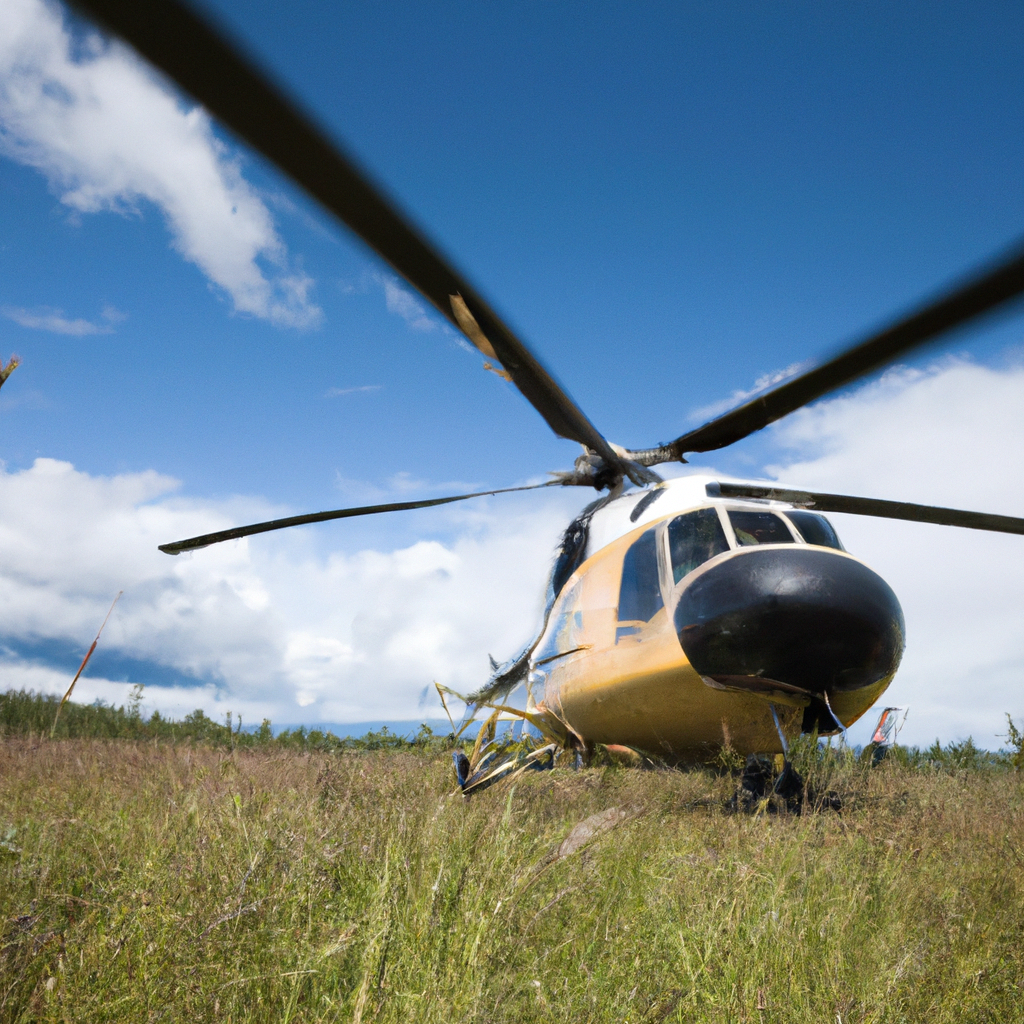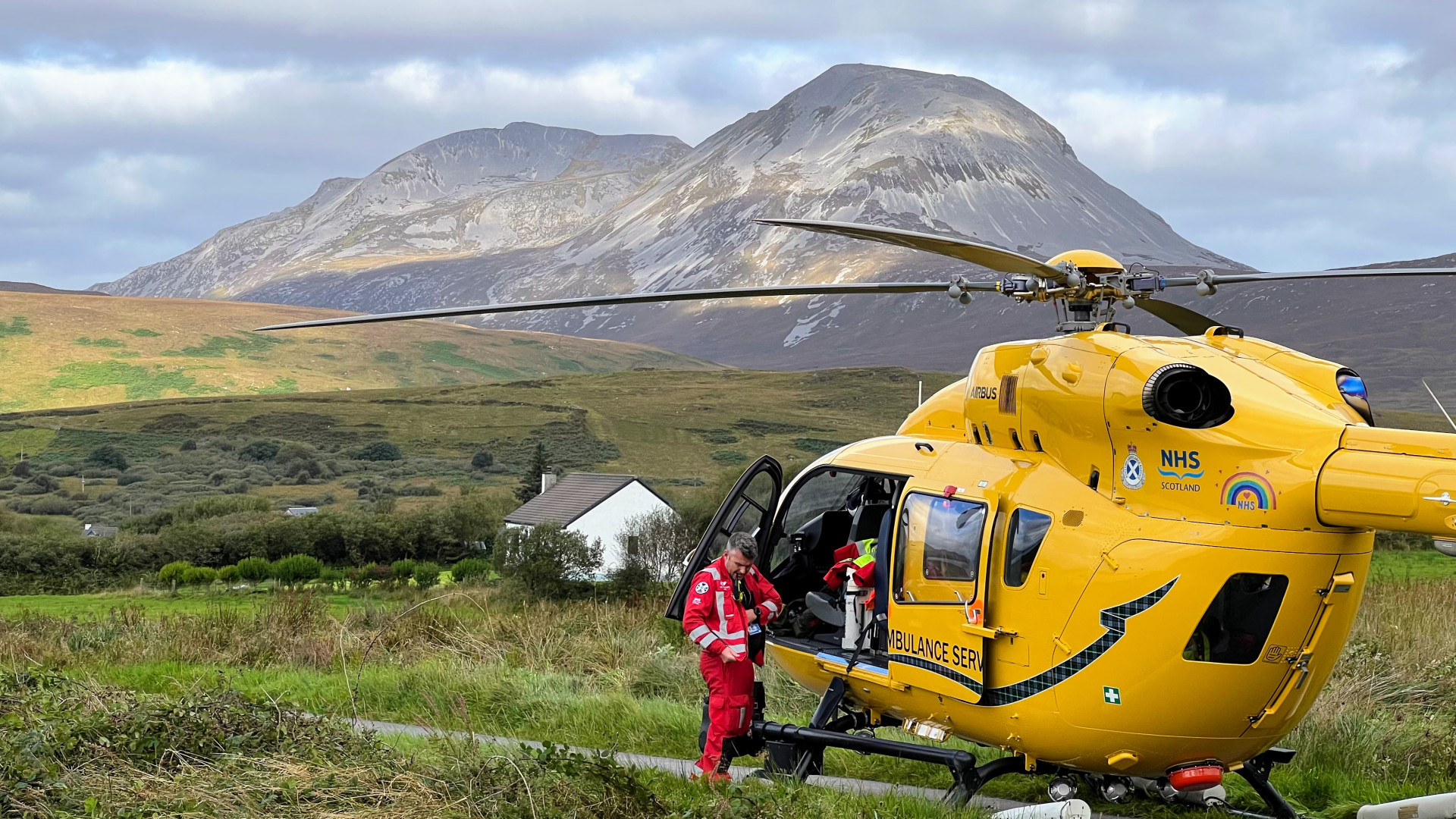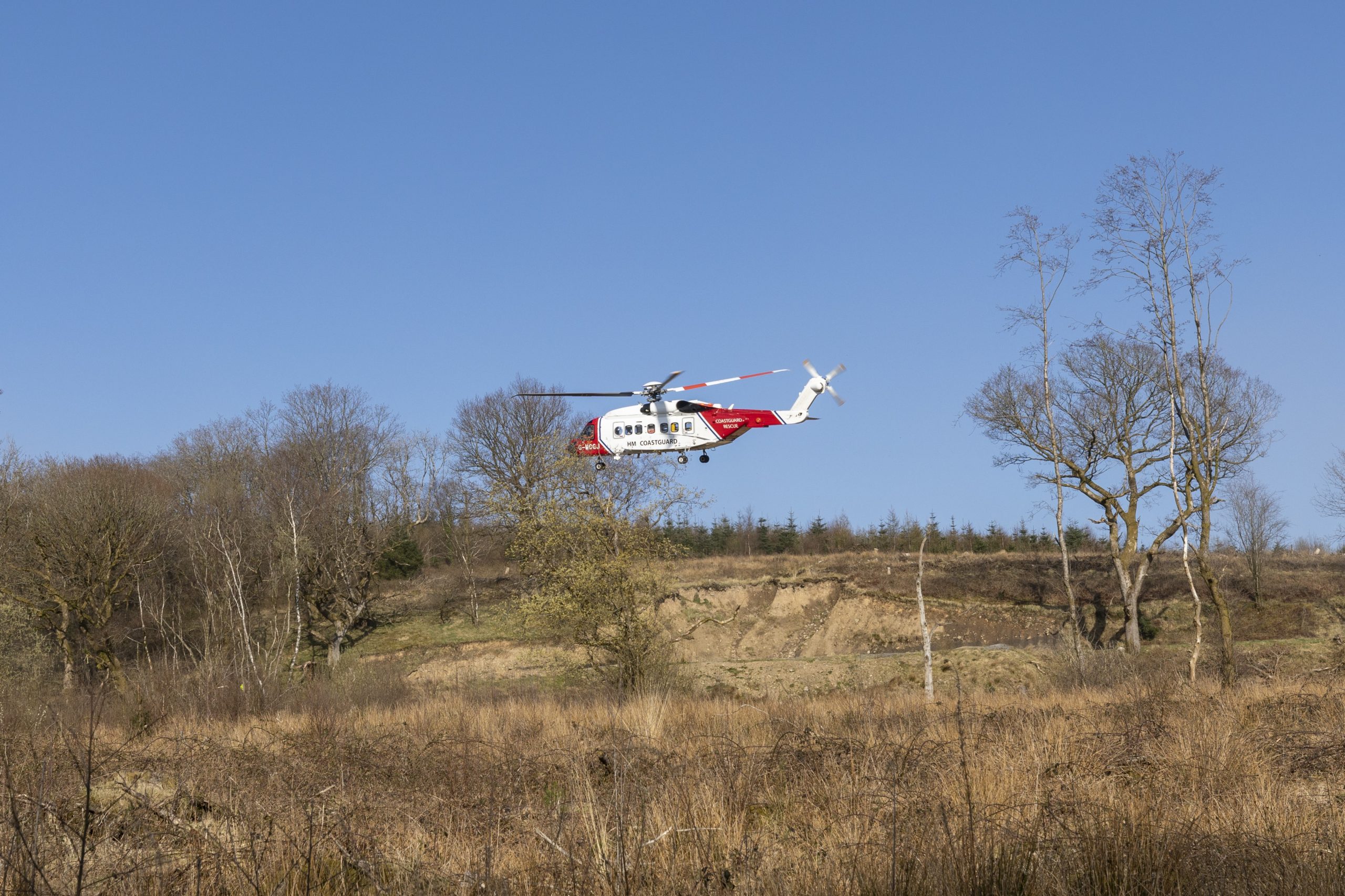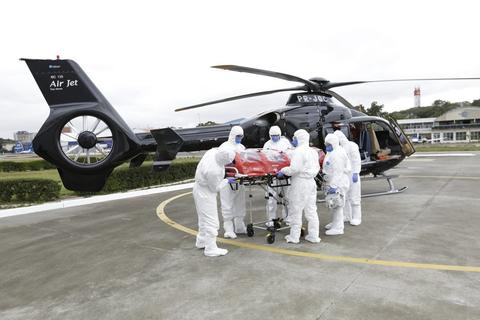So you’re interested in air ambulance operations, huh? Well, let me tell you, the challenges that come with operating air ambulances in remote regions are no walk in the park. Imagine trying to reach a patient in a remote mountain range or a dense jungle. The sheer logistics of it all can be mind-boggling. Not to mention the unpredictable weather conditions and limited resources available in these areas. In this article, we’ll explore the various challenges faced by air ambulance teams who strive to provide life-saving care in the most remote corners of the world. Get ready to be amazed, my friend, because this is not your typical ambulance ride.
Lack of Infrastructure
When it comes to air ambulance operations in remote regions, one of the major challenges faced is the lack of infrastructure. This includes limited or non-existent runways and inadequate landing facilities. In many remote areas, there simply aren’t enough runways or landing pads that can accommodate air ambulances. This makes it difficult for medical flights to access these areas and provide critical care to patients in need.
Another aspect of the lack of infrastructure is the absence of proper communication systems. In remote regions, there may be limited or no communication systems in place, making it challenging for air ambulances to coordinate with ground medical teams or receive real-time updates on the patient’s condition. Without effective communication, the efficiency of air ambulance operations can be greatly impacted and patient care may suffer.
Geographical Barriers
The geographical barriers present in remote regions pose significant challenges to air ambulance operations. One such barrier is inaccessible terrain. Remote areas are often characterized by rugged landscapes, mountains, dense forests, or impassable terrains, making it extremely difficult for air ambulances to reach these locations. This can lead to delays in reaching patients and providing them with much-needed medical assistance.
Extreme weather conditions are another geographical barrier that air ambulance services have to contend with. Remote regions are often prone to severe weather, such as blizzards, storms, or heavy rainfall. These adverse weather conditions can make it unsafe for air ambulances to operate and can restrict access to patients in need. Flying in such conditions can put both the patient and the air crew at risk, which is why air ambulance operations need to carefully assess weather conditions before embarking on a mission.
Additionally, the distance and remote locations of these regions further add to the geographical barriers. Many remote areas are situated far away from major cities or medical centers, resulting in longer distances for air ambulances to cover. This can increase transport times, leading to delays in getting patients to appropriate medical facilities. It also means that air ambulances may have to carry additional fuel, limiting their payload capacity and potentially affecting the overall efficiency of the operation.

Limited Resources
In remote regions, the scarcity of medical facilities is a significant challenge for air ambulance operations. Unlike urban areas, where hospitals and healthcare centers are readily available, remote regions often lack adequate medical facilities. This means that air ambulance services may have to transport patients over long distances to reach the nearest medical facility equipped to handle their condition.
Moreover, the lack of trained staff poses another obstacle. In remote regions, there may be a shortage of qualified medical professionals who can provide immediate and specialized care during air ambulance operations. This can result in delays in administering critical medical treatments and potentially worsen the patient’s condition before reaching a suitable medical facility.
Furthermore, limited availability of medical supplies adds to the challenges faced by air ambulance services in remote regions. Due to the remote nature of these areas, accessing and replenishing medical supplies can be a logistical nightmare. This scarcity of essential medical equipment and medications can hinder the ability of air ambulances to provide the necessary care to patients during the transportation process.
Complex Patient Conditions
Air ambulance operations in remote regions often involve dealing with challenging medical emergencies. Patients in these areas may suffer from unique or complex medical conditions that require specialized care. This can include trauma cases, obstetric emergencies, or critical illnesses that necessitate immediate attention from specialized medical professionals.
Moreover, longer transport times are a crucial factor to consider during air ambulance operations in remote regions. The time it takes to reach a patient and transport them to a suitable medical facility may be considerably longer compared to urban areas. This prolonged transportation time can impact patient outcomes, especially for time-sensitive conditions such as heart attacks or strokes, where every minute counts.
Another challenge in remote regions is the presence of patients with multiple medical conditions. These patients often require a coordinated effort from various medical specialists and a comprehensive understanding of their medical history. Air ambulance operations need to ensure seamless coordination among medical teams and efficient communication to cater to the complex needs of such patients.

Safety Concerns
Safety is of utmost importance in air ambulance operations, and it becomes even more crucial in remote regions. There are several safety concerns that need to be addressed when operating in these areas. One such concern is the risk involved in landing and takeoff. Remote regions may have limited or uneven landing areas, increasing the chances of accidents or damage to the aircraft. Pilots and crew members need to be highly skilled and experienced in navigating these challenging landing conditions.
Another safety challenge is the limited navigation aids available in remote regions. Lack of accurate navigation systems, such as GPS or ground-based navigation aids, can make it difficult for air ambulances to navigate unfamiliar territories. This can lead to longer flight times, fuel inefficiencies, and potential risks to patient safety.
Furthermore, security risks can be a concern in certain remote areas. These regions might be prone to conflicts or have a high crime rate, making it crucial for air ambulance operations to have adequate security plans in place. Ensuring the safety of both the crew and the patients during transport is essential, and additional security measures may be necessary to mitigate potential risks.
Long Transport Distance
Air ambulance operations in remote regions often involve extended flight times due to the long distances that need to be covered. Unlike urban areas, where medical facilities are within relative proximity, remote regions can be located hundreds of miles away from the nearest hospital or specialized care center. This results in longer transport times, which can have implications for patient outcomes and the overall feasibility of the operation.
Extended flight times can also contribute to fatigue among the air ambulance crew. Flying for extended periods without breaks or sufficient rest can lead to fatigue, impacting the crew’s cognitive abilities and decision-making skills. To mitigate this challenge, air ambulance services need to implement appropriate crew rotation schedules to ensure that crew members receive adequate rest and are at their optimal state during every mission.
Additionally, fueling challenges can arise in remote regions. These areas may lack readily available fueling stations, requiring air ambulances to carry additional fuel or plan refueling stops along their route. This adds complexity to the operation, as refueling stops need to be strategically coordinated to ensure that there are no disruptions to patient care or delays in reaching medical facilities.

Specialized Equipment and Vehicles
Availability and accessibility of specialized equipment and vehicles can be a significant challenge in air ambulance operations in remote regions. Unlike urban areas, where medical equipment and vehicles are readily available, remote regions may have limited resources in this regard. This can hinder the ability of air ambulance services to provide the necessary level of care during transportation.
Moreover, the higher costs and maintenance associated with specialized equipment and vehicles add to the challenges. Procuring and maintaining specialized medical equipment, such as ventilators or defibrillators, can be expensive. In remote regions, where access to resources is limited, acquiring and maintaining such equipment may pose financial constraints and logistical hurdles.
Furthermore, the logistical challenges of transporting specialized equipment and vehicles to remote regions can be daunting. These areas may have inadequate road networks, making it difficult to transport large medical equipment or vehicles. Air ambulance services need to carefully plan and coordinate the logistics to ensure that the required equipment is available when and where it is needed.
Regulatory and Legal Obstacles
Air ambulance operations in remote regions face regulatory and legal obstacles that can impede their ability to provide timely and efficient care to patients. One significant challenge is the presence of different aviation regulations in different regions. Air ambulance services need to navigate through complex regulatory frameworks, ensuring compliance with various rules and requirements while operating in remote areas.
Cross-border operations present another regulatory challenge. In certain remote regions, air ambulances may need to cross international borders during patient transport. This involves complying with immigration and customs regulations, coordinating with different authorities, and ensuring smooth transitions between jurisdictions. Failure to adhere to these regulations can result in delays or even refusal of entry, jeopardizing patient care.
Insurance and liability issues also pose legal obstacles to air ambulance operations in remote regions. Determining liability and insurance coverage in cases of medical emergencies can be complex, especially when operating in remote areas with different legal systems. Navigating through these legal complexities is essential to ensure that patients receive the necessary care without the burden of financial or legal disputes.

High Costs
The cost factor is a significant challenge when it comes to air ambulance operations in remote regions. Air ambulance services can be expensive due to the specialized equipment, highly trained medical professionals, and the complexity of operations involved. These costs are further amplified in remote regions due to the unique challenges faced.
Expensive air ambulance services can pose a financial burden for patients in remote areas. Many patients in these regions may not have adequate health insurance coverage or the financial means to afford air ambulance services. This can lead to delayed or inadequate medical care, compromising patient outcomes.
Additionally, inadequate insurance coverage can be a challenge for air ambulance services operating in remote regions. Insurance policies may not cover the full cost of air ambulance transportation or may have restrictive clauses, leaving patients and their families responsible for significant out-of-pocket expenses. This lack of coverage can limit access to air ambulance services for individuals in remote regions, further exacerbating their already limited healthcare options.
Coordination and Collaboration
Effective coordination and collaboration are crucial for successful air ambulance operations in remote regions. Interagency coordination is vital to ensure seamless communication and cooperation between air ambulance services, ground medical teams, and local authorities. This coordination is necessary to facilitate smooth patient transfers and to provide timely medical care during transportation.
Partnerships with local authorities are also essential for air ambulance operations in remote regions. Working closely with local governments and healthcare organizations can help air ambulance services navigate the unique challenges of operating in these areas. Local authorities can provide valuable support, including assistance with logistics, security arrangements, and obtaining necessary clearances.
Moreover, cooperation with ground ambulance services is vital to ensure a streamlined continuum of care. Air ambulance services rely on ground ambulance support to transport patients to and from airfields, as well as to facilitate efficient transitions between ground and air transportation. Collaborating with ground ambulance services helps ensure that patients receive seamless care throughout the entire transportation process.
In conclusion, air ambulance operations in remote regions face numerous challenges that require careful planning, coordination, and resourcefulness to overcome. The lack of infrastructure, geographical barriers, limited resources, complex patient conditions, safety concerns, long transport distances, specialized equipment and vehicles, regulatory and legal obstacles, high costs, and the need for coordination and collaboration all contribute to the complexity of air ambulance operations in remote regions. By understanding and addressing these challenges, air ambulance services can strive to provide life-saving medical care to those in need, regardless of their geographic location.




